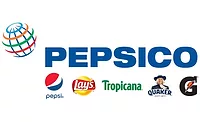Stockpiling continues to boost beverage sales in US
IRI, BCG report beverage sales up nearly 40 percent in week ending March 15
As the COVID-19 outbreak accelerates in Europe and the United States, governments, businesses and consumers are rapidly changing behaviors. In its March 26 report titled “COVID-19 Impact: Consumer Spending Tracker for MULOC Retailers – US, UK, France, Italy, NZ,” Chicago-based Information Resources Inc. (IRI) collaborated with its partners at the Boston Consulting Group (BCG) to analyze the latest consumer purchases in these respective countries.
The report notes that the United States and United Kingdom experienced an inflection point the week of March in which significant stockpiling began, as well as a strong uptick accounting for 1.5-times normal weekly for the week ending March 15.
In the United States, total store sales percent change for the week ending March 15 versus a year ago was up 52.5 percent. This was highest among all the countries tracked in the report. Italy recorded a 21.4 percent increase, France was up 36.9 percent, the United Kingdom increased 23.2 percent while New Zealand experienced a 19.5 increase.
Among the edible categories tracked, the report found that beverage sales were 39.6 percent for the week ending March 15. This once again was the highest among all the tracked as Italy was up 17.5 percent, France increased 26.5 percent, the United Kingdom was up 24.2 percent and New Zealand increased 15.9 percent.
When it comes to alcohol sales, IRI shows that U.S. sales were up 27.6 percent compared with the respective 52-week period. By comparison, Italy reported alcohol sales up 9.7 percent, France was up 7.2 percent, the United Kingdom increase 11.1 percent and New Zealand was up 4.6 percent.
Within the United States beverage category, the market research firms also reported strong growth for the market’s largest sub-categories. For instance, regular carbonated soft drink (CSD) sales had increased 19.5 percent for the week ending March 15. Meanwhile low-calorie CSD sales were up 33.9 during the same period. Non-aseptic energy drink sales posted the smallest increase, recording 7.7 percent growth compared with the previous year. The largest gains were from convenience/PET still bottled and non-aseptic sports drinks, which were up 82.1 percent and 54.9 percent, respectively.
The largest sub-categories within the beverage alcohol market also experienced strong increases. Domestic beer/ale including alcohol-free varieties were up 22 percent for the period ending March 15. Meanwhile, imported beer/ale including alcohol-free varieties was up 18.9 percent. The spirits market and the domestic table/still wine segment reported the strongest gains, up 33.4 percent and 41.7 percent, respectively.
The U.S. data represents transactions from the POS database with data collected in multi-outlet plus convenience (MULOC) channels, which include grocery, drug stores, convenience stores, mass merchandisers, Walmart, club and dollar chains, and DECA stores. Costco data is not included.
Looking for a reprint of this article?
From high-res PDFs to custom plaques, order your copy today!




